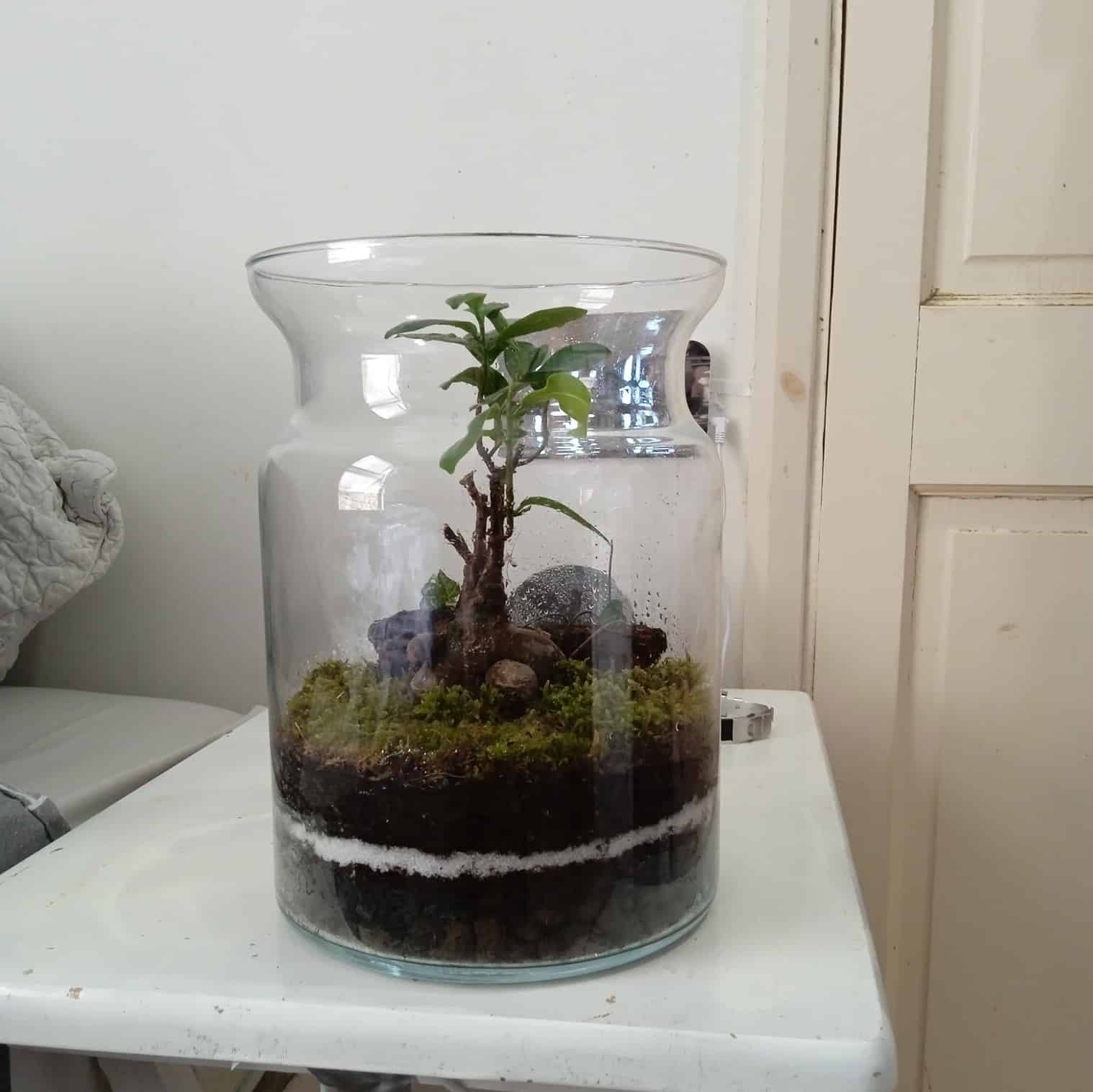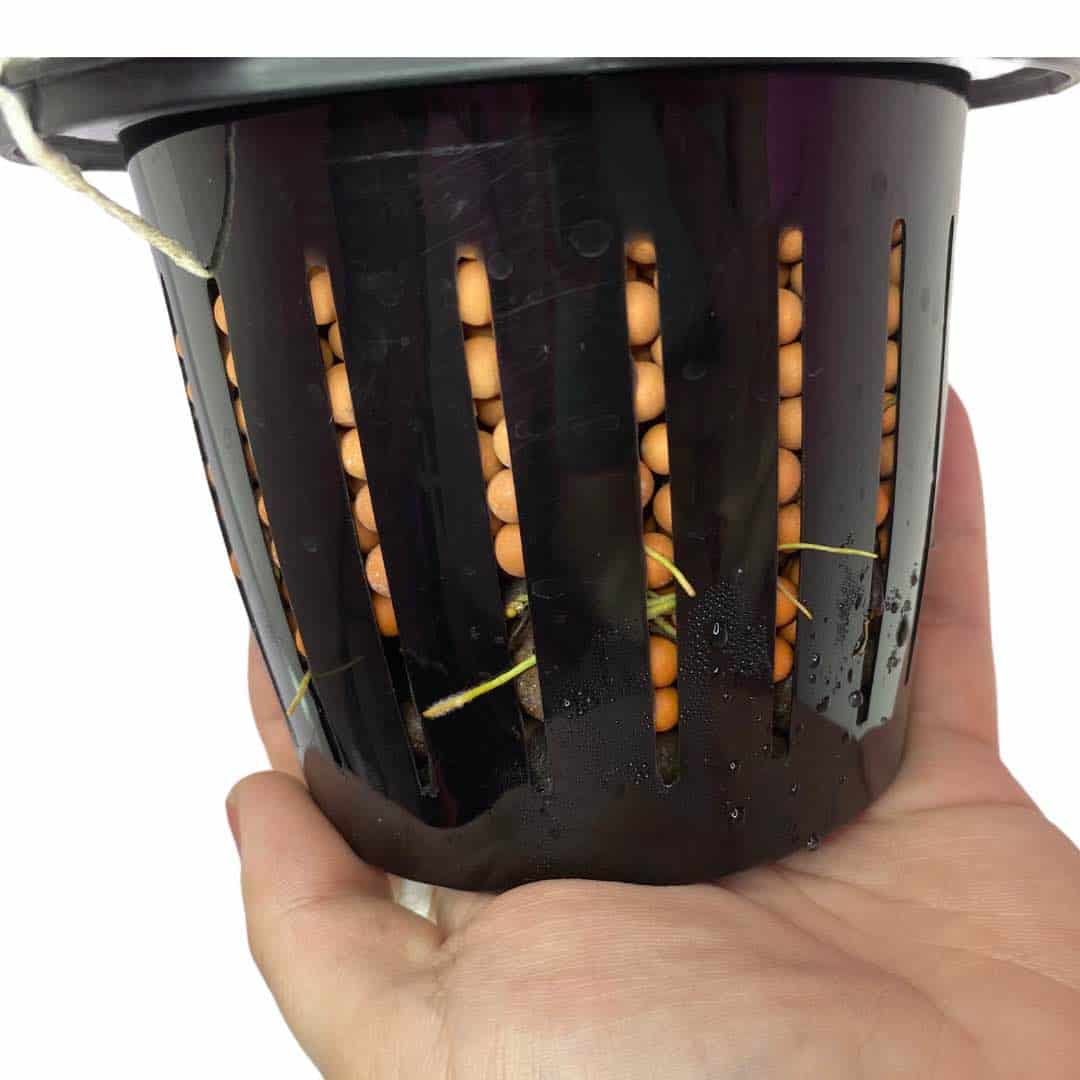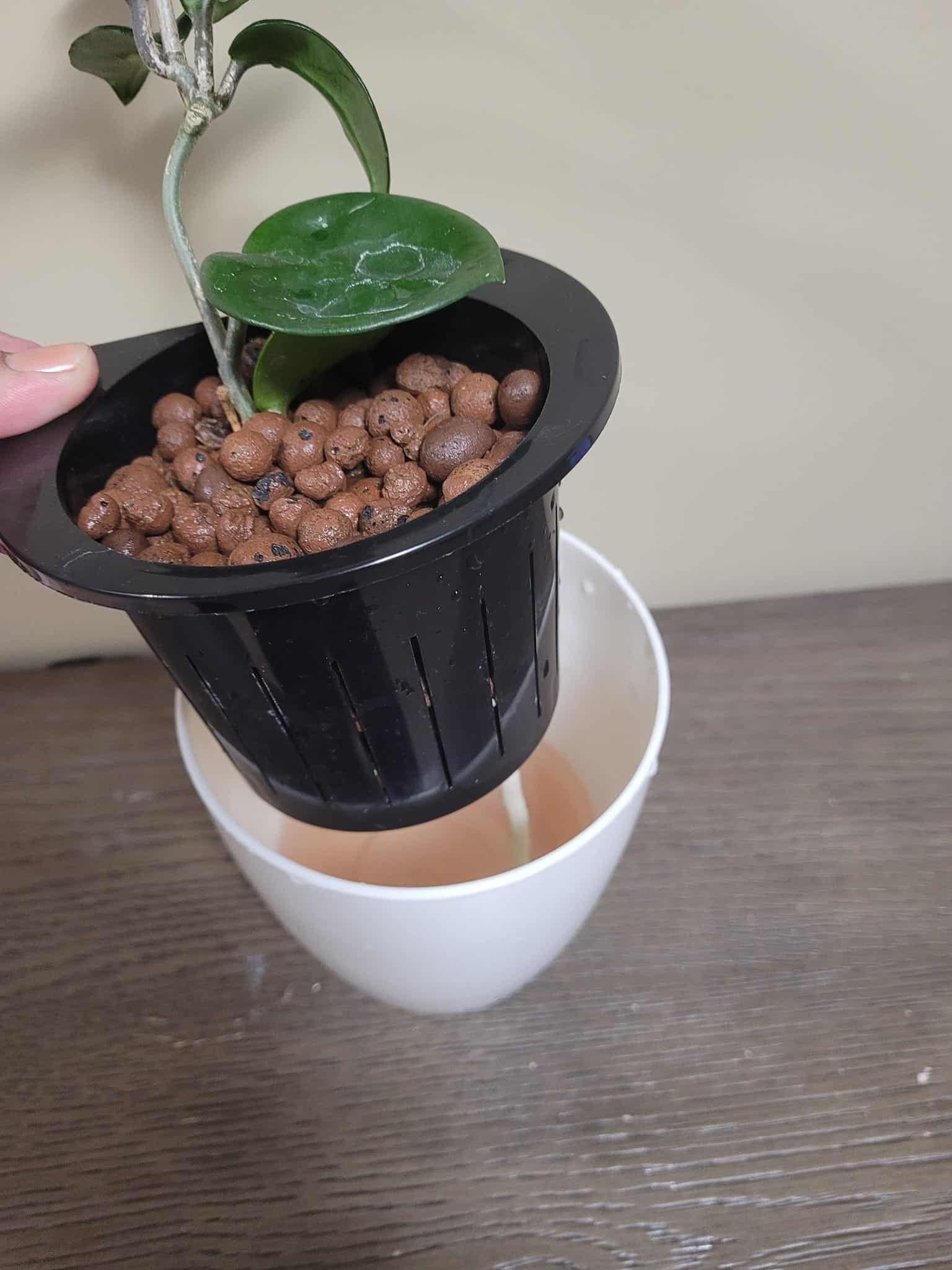LECA balls, short for Lightweight Expanded Clay Aggregate, are acclaimed soil substitutes with endless interesting applications for the water propagation of plants!
LECA is famous for growing aesthetically pleasing indoor plants, but they are not restricted only to offering indoor artful showpieces. In this article, we will learn about many more creative uses of LECA.
Table of Contents Show
What are LECA Balls?
LECA stands for Lightweight Expanded Clay Aggregate. They are commercially branded Hydrotons Clay Balls, Hydro Farms, Hydro Balls, and Hydro Crunch.

The final product is pH neutral and puffy balls 0.01-25 mm in diameter with density ranging from 250-510 kilograms per cubic meter, making them extremely light.
Internally, LECA balls consist of small air pockets that help to trap water and nutrients for the plants.
LECA was first developed in 1917 in Missouri for construction works. However, LECA has found its usage in water treatments, filtration, drainage, and gardening.
Pros and Cons of LECA Balls for Plants
LECA replaces soil and can be placed in semi-hydroponic or hydroponic mediums to grow plants.
Although LECA balls have many advantages due to their adaptability, they have some cons as well.
Advantages of LECA Balls for Plants
- LECA has a porous internal structure, evading the risk of overwatering and root rot in plants.
- Due to their permeable nature, LECA balls allow better oxygen intake for the plant roots.
- LECA balls soak only necessary water and expel the rest from the bottom of the pot, rather than soil that absorbs more than usual.
- It reduces pest incidence, such as fungus gnats, as they don’t decompose easily.
- They are reusable after proper sterilization.
- Repotting becomes cleaner with LECA use.
Disadvantages of LECA Balls for Plants
- To properly utilize LECA balls, one should have a basic idea of semi-hydroponic or hydroponic plant growth.
- Plants growing in LECA need occasional nutrient and pH checks.
- For beginners, LECA is costly to set up at first.
- You must flush the mineral build-up from LECA balls occasionally.
- Trailing or climbing plants find it hard to grow in wobbly LECA substrates.
How to Use LECA Balls?
LECA is an inorganic and flexible substrate, fitting for plant growth due to its porosity and ability to hold nutrients.
They act as a supplement, completely replacing soil use or used with soil in pot plants and for indoor gardening.
1. Growing Medium in Vivariums
A vivarium is an artificial ecosystem with live plants or animals to observe and study their growth.
Over the years, Vivariums have been important, not only for research purposes but also as a means of indoor gardening.
Furthermore, vivariums include ripariums, terrariums, paludariums, and aquariums, where LECA proves useful.
Since vivariums are enclosed ecosystems, the use of soil becomes grimy during frequent clean-ups.
So, adding LECA balls in vivariums act as a false bottom, promoting drainage and acting as a breeding ground for the growth of healthy bacteria.

2. Top Soil Dressing
You can either use LECA wholly or as a bottom aid, or even as a topsoil dressing medium.
Likewise, placing LECA balls on top of the potting soil makes the soil inaccessible to insects and pests.
Another advantage of LECA in topsoil dressing is acting as a layer of mulch to lock down moisture.
Additionally, chances of thermal shock and frost damage to the roots are reduced when you scatter sizeable LECA balls on the topsoil.
How to Prepare LECA for First Use?
Treating and properly preparing LECA for its first use is important to ensure the long-term health of the plants.
Follow the steps below to prepare your LECA balls during the first use.
- Rinse freshly unpacked LECA balls and place them in a wide strainer.
- Wash them with distillate water to remove the adhering dust or clay particles until they are smooth.
- Place the LECA in a plastic container or bucket containing distillate water.
- Gently swirl the LECA balls and let them soak for 12-24 hours.
To save LECA balls for later, dry them in the sun and store in laundry bags or mesh cloths.
Choosing the Right Plants to Grow in LECA
While LECA balls are a perfect medium to grow some plants, others won’t do as better as those that grow.
Plants that can be grown in LECA should have the following characteristics.
- Ability to grow a large root system in a short amount of time.
- Preferring well-aerated moist soil and dry outs between watering.
- Handling the stress of being in and out of the growing medium.
Some plants that grow well in LECA are Hoyas, ZZ Plants, Sansevieria, Spider Plants, Monsteras, Begonias, Alocasias, Orchids, etc.
Contrarily, Peace Lilies, Crotons, Succulents (Cacti and String of Pearls), Prayer Plants, Pothos, Ferns, etc., don’t suit well in LECA.
Right Pot for Using LECA Balls
LECA are inorganic materials, meaning that they don’t have nutrients.
So, it’s important to keep a reservoir of nutrient solution for feeding the plants that grow in LECA substrates.
Although LECA is perfect for placing in glass wares or even a DIY plastic bottle, homemade pots like these should have drainage holes.
Additionally, LECA pots should assist in feeding the plant from the base and nether overwatering issues.

1. Self-Watering Pots
Self-watering pots consist of a growing bed (containing LECA balls and plants) on top of a nutrient solution.
LECA balls on the growing bed stay about one-third down, barely touching the nutrient solution below.
In these pots, LECA soaks in water and nutrients from below that rise up by capillary action, reaching the plant roots.
One thing to consider is that the roots must not be plunged into the nutrient solution.
Hence, the roots require frequent trimming to keep them high above.
African Violets and Pothos are some common houseplants fitting for self-watering pots that contain LECA.
2. Wicking Pots
Wicking pots are similar to self-watering pots but differ as a long wick touches the nutrient solution in the reservoir.
The basic design of a wicking pot comprises a growing bed containing LECA balls above and a nutrient reservoir below.
LECA balls stay in touch with the nutrient solution by a permeable cloth or netting to take up the water and nutrients through wicking action.
This allows even distribution of nutrients and water creating more favorable conditions for plant growth.

Use LECA Balls as a Growing Medium
Preparing the LECA is one part of the process, but to use them correctly, follow the steps below.
- Fill one-third of the pot with LECA and place your plant by evenly spreading out the roots.
- Add LECA balls up to an inch below the pot’s brim and shake the pot to level them evenly.
- To prepare nutrient medium, use General Hydroponics Flora Series and mix in distillate water following pack instructions.
- Change the nutrient solution every 2-4 weeks or when the water dries due to evaporation.
- Flush the LECA balls with distillate water every 2-4 weeks when the salt residues start to build.
If you want to know more about using LECA, check out the following video.
How do you use LECA Balls for Aquaponics?
An aquaponic system is a method of growing plants and raising fish in a collaborative aquatic environment.
Since LECA has been used for hydroponics or semi-hydroponics growth of plants, there’s no doubt that they are suitable for aquaponics.
The plants grow on a netted bed containing LECA balls that hover above an aquarium tank.
Only some parts of the LECA netting bed touch the water. The LECA balls absorb the water and nutrients for the developing plant.

Furthermore, LECA purifies the water with fresh oxygen and removes the contaminants, creating a suitable habitat for fish.
On the other hand, fish offer plants crucial nutrients through feces.
This is beneficial for the speedy production of green leafy vegetables like lettuce.
But, the system proves to bring forth many complications in terms of maintenance and is impossible to sustain on a small scale.
FAQs About LECA Balls
Can You Mix LECA Balls with Soil?
You can mix LECA balls with the soil to promote aeration and drainage. Consider adding LECA balls on the topsoil or as a ground layer while repotting the plant.
What Happens if LECA Balls are not Soaked in Water?
If you refrain from soaking LECA balls in water, plants may not get the drainage requirements and can show stunting growth.
When to Water the Plants in LECA?
LECA substrate must stay dry between watering, or it may accumulate too much water and suffocate the plant roots.
From Editorial Team
Clean LECA before Reusing
Unlike soil, you can reuse LECA as they have less chance of inflicting pest and disease incidence to the plants. But, before reusing LECA, you should wash them with hot water to leach the stockpiled mineral salts.


